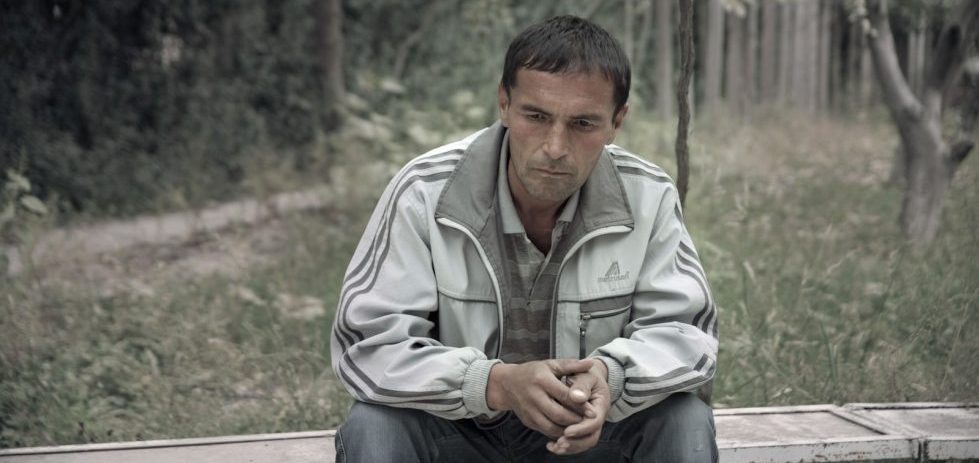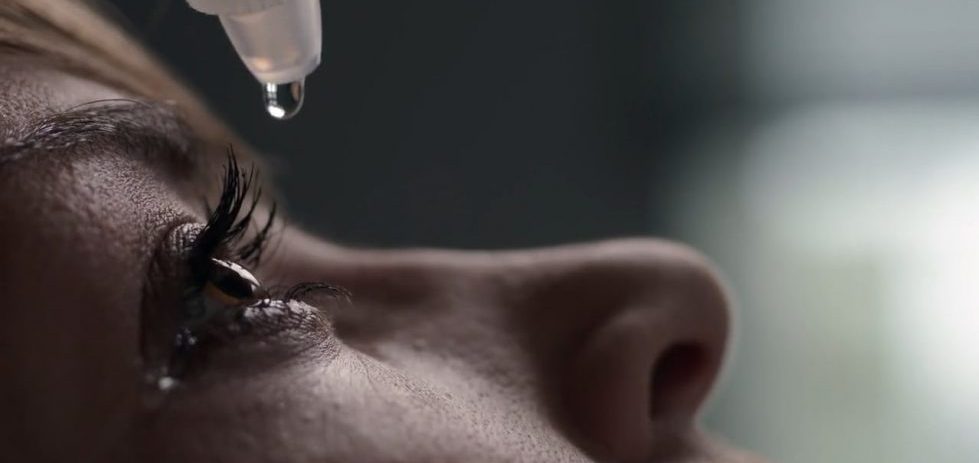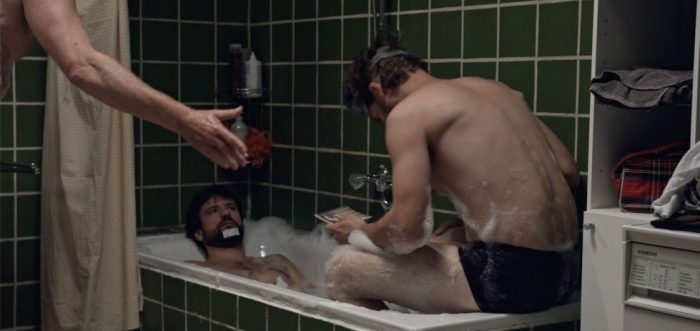Every year, MIFF’s International Shorts package gives us the chance to view “internationally acclaimed and awarded films”, according to the program. It’s not exactly a representation of the most interesting and exciting things happening in the short film medium1, but it does give a nice cross-section of filmmaking from around the world, as well as a very clear idea of what’s winning big awards. Short films still, occupy a very strange space in the media landscape. Very few make money, and the built-in audience for them is virtually limited to other short filmmakers. Because of this, the medium is constantly in conflict between snappy, attention-grabbing gimmicks/twists/tricks, and great storytelling with interesting ideas. Thankfully, most of the shorts have attempted to engage with this dilemma, even if they don’t completely rectify it.
One short completely concerned with being great cinema is Maria Guskova’s The Return of Erkin (Russia, 2015), in which a prisoner convicted of murder returns to his hometown in Kyrgyzstan. The longest film in the stream at 29 minutes, it’s shot in carefully staged and often slow-moving wide shots, giving a powerful weight to Erkin’s small actions (similar to those in a Lav Diaz film) as he attempts to re-integrate into society. After pleas for forgiveness from his victim’s family fail, Erkin finds work in a cotton farm. We follow him through hypnotic sequences as he transports cotton and works the machinery, gaining the sense of some kind of consolation and atonement through labour. Alongside these more meditative sections, the film finds a genuine sense of the joys and pains of life: Erkin steals the show dancing at a wedding reception, but is then taken out back and beaten to a pulp by the brother of the man he killed. This duality, it seems, will be the tone of the rest of his life. Also shot in Kyrgystan, is Elnura Osmonalieva’s Seide (Kyrgyzstan, 2015),where a young girl has to give up her beloved horse in the process of an arranged marriage. It’s obviously a story very close to the filmmakers and region itself, but its flat story trajectory—bad, to very bad, to worst—unfortunately left little to be moved by.

Also tackling social justice issues is Toby Fell-Holden’s Balcony (UK, 2015). Taking place in a UK tenement block, the film charts a friendship between Tina, a white British girl, and her Muslim neighbor Dana. Dana’s father is something of a recluse, and we see scenes of the miserable and abusive home life that Tina assumes Dana has. She also believes Dana to be a closeted homosexual, and falls in love with her. Ultimately we’re told (literally, through voice-over) that Tina’s misreading of their friendship and her presumptions about Dana’s father is more a reflection of her own life than reality. For me, the film’s ending of blunt tragedy made it less effective than intended, letting me too easily off the hook. Instead of thinking “what if this happened to me”, I was left with “thank god it didn’t, and won’t.” I was reminded of that inherent tension in short films—the subversion of both white saviour and closeted homosexual narratives is interesting, but the need to be attention-grabbing enough to stand out amongst the crowd results in an over-the-top ending.
Some of the better shorts navigated this issue more deftly by focusing on how people interpret, or fail to interpret, the world through other artforms. In Or Sinai’s Anna (Israel, 2015) a seamstress takes a day off to don a tight dress and find a man who’ll make love to her. All she finds, however, is a series of pornography clichés, from Fake Taxi to the classic ‘visit from the plumber’. The film draws both humour and sadness out of the clash between fantasy and reality. The taxi driver can’t get it up, and even once she does find a man who’s ready, willing, and able, neither she nor he has a condom on-hand. In Palme d’Or winner Timecode (Spain, 2016), two car-park security guards, who usually only interact when changing shifts, form an unspoken relationship by dancing in front of the carpark’s CCTV cameras and leaving notes for where and when on the recordings they bust a move. While Anna’s protagonist struggles to connect in a world turned into a bad porno, the screens and numbers of the security system in Timecode become a theatre for its two leads, both of them searching for transcendence from the monotony of work, and a wordless connection that’s otherwise impossible in their regular lives.
Other standout shorts found the difference between gimmick and idea by exploring what is seen and unseen. In Dubravka Turić’s Belladonna (Croatia, 2015), what we don’t see can be just as powerful as what we do. Sasa, a patient at an optometry clinic, is given eye-drops and made to close her eyes. While waiting for treatment, the patient and clinic’s secretary sit on opposite sides of the cinemascope frame, only fidgeting slightly. By giving us two simultaneous focal points, Turić makes us aware of our sense of vision, by inviting us to trace our eyes as much as possible. Later, another woman enters the clinic, and Sasa hears her tragic account of a raid on her village, causing an emotional reaction from her she didn’t think possible. The simplicity and control of the film is somewhat spoiled by a melodramatic ending, where the relation of camera and eyesight becomes a little too obvious (no points for guessing that everything goes out of focus).

A cleverer playing of the relationship between the camera and actual vision comes from Tim Ellrich’s The Bathtub (Austria/Germany, 2015), in which three brothers attempt to recreate a childhood photo for their mother’s birthday. A very subtle one-shot wonder, the entire film is told through the lens of the camera the brothers are using to take the picture, moving only when the brothers shift, reframe, and adjust exposure. It sounds like a gimmick, but in actuality the unique shooting style poignantly communicates the importance of photos to families as a way of understanding the past and capturing the present. It also becomes a brilliant storytelling device. The narrative’s ebbs and flows as tensions rise and past disputes are dragged up between the brothers, is staged around how closely the frame comes, or doesn’t come, to matching that all-important childhood photo. It’s something as genuinely funny as it is touching.
Produced by, directed by, and co-starring Danny DeVito, Curmudgeons (USA, 2016) also goes for laughs and gets them, by being as much of a crowd-pleaser as you’d expect from the man who directed Matilda (1996). Based on the one-act play of the same name, the film stars DeVito’s daughter Lucy as a woman visiting her grandfather (David Margulies) in a retirement home with a special surprise: her grandfather’s former lover, played by DeVito himself. Essentially a homosexual romantic comedy, it’s admirable to see the queer aspect emerge beautifully, almost discretely. I felt as though the story of their relationship was being recounted through my own reaction to the film, unsure at first whether the pair were just friends or something more. Schmaltzy and proud of it, it’s very hard to dislike, as would be anything that has both ‘Love Is Strange’ and ‘Since I Don’t Have You’ on its soundtrack. If anything, the trip around the world that International Shorts provides is a reminder that cinema exists everywhere, even in the mountains of Kyrgystan where you might least expect it. It’s also a reminder that short films can go beyond camera tricks or simple reference to other art forms, providing new, interesting and legitimate ways of storytelling.
